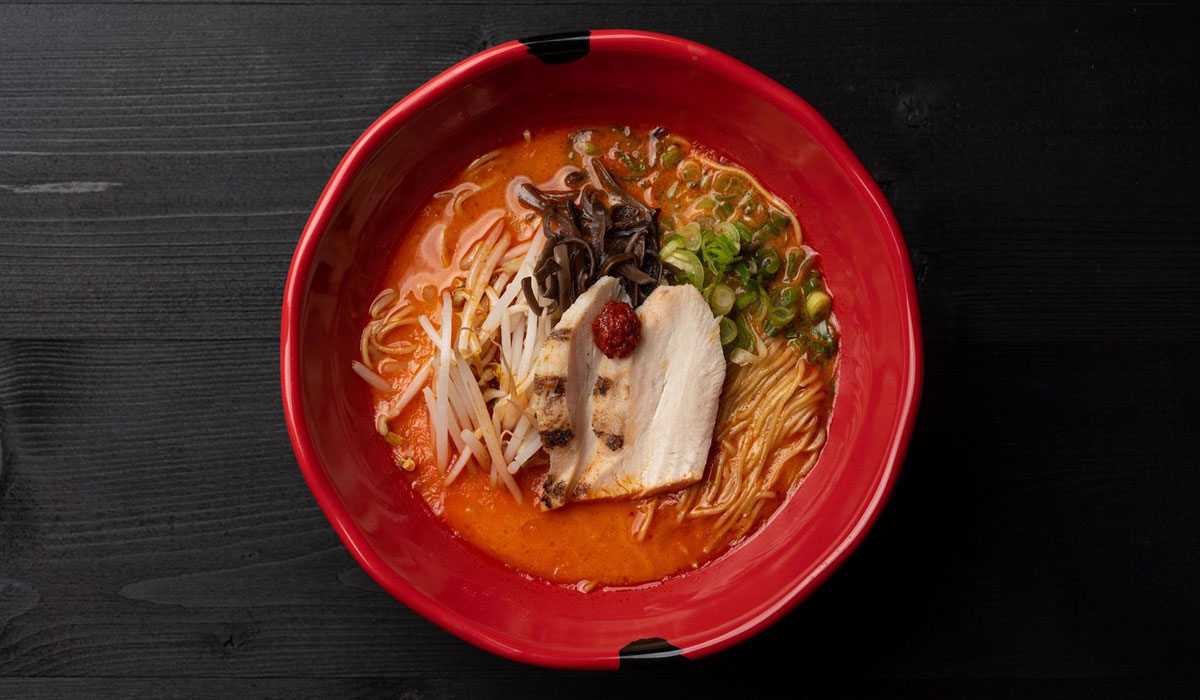At bushi by JINYA, we live by the famous Japanese phrase, “Utsute wa mugen,” meaning “There are infinite ways to play the cards.” We believe as long as we don’t get in the way of ourselves by giving up, there are methods and solutions to everything.
It goes without saying that the pandemic forced restaurants to re-evaluate the way they serve guests. While our team at JINYA Holdings didn’t know it at first, we’ve recognized now that the crisis had hidden benefits for our brand. As we fought to adapt to consumer needs and industry trends, the crisis ended up being the nudge we needed to reinvent our concept while still holding true to our vision of serving bold Japanese flavors to more of the world.
bushi was founded as an adapted business model in 2018 when one of our JINYA Ramen Bar locations was having difficulties operating due to its small kitchen space. We didn’t want to settle with JINYA offering fewer of its unique selections, so we decided to make a new concept called bushi by JINYA—a fast casual version of JINYA. For nearly two years, bushi was successfully serving the community. Then, we entered a global pandemic and dining rooms were forced to close.
We took this time to re-evaluate the brand and determine how to best serve the flavors of Japan to our guests in the most safe and convenient way possible. Today, we are confident that our modified to-go- and delivery-focused concept is ready for expansion across the country via franchising.
Here are three things to consider when starting to franchise a new business model:
Just roll with the new consumer environment.
Change is never easy, but it’s inevitable. Brands must remain flexible and able to quickly adapt to consumers’ changing needs. That’s why when we reopened bushi in August 2020, we established a grab-and-go model that was more aligned with the new consumer climate and began serving guests through a complete online ordering process. The switch to full online ordering enabled us to cut down on labor costs and training. By decreasing labor costs, optimizing new technology and adopting a smaller menu, we re-positioned bushi to thrive in the to-go and third-party delivery space.
There’s room to enhance the to-go and delivery experience.
There’s no doubt that consumers’ behaviors have changed over the past year and a half. People have become more comfortable with eating on the couch or at their own dinner table, and now 53 percent of consumers say that takeout and delivery is fundamental to the way they live. Before the pandemic, eating ramen was thought of as a dine-in experience. But when dining rooms were closed, consumers realized that it’s possible to eat delicious, authentic ramen in the comfort of their own homes. Though we never expected to see this happen, we were fast to capitalize on the ever-changing consumer climate and focused heavily on our guests’ needs.
For all to-go and delivery orders, we use sturdy to-go boxes for our soup, and we offer packaging for guests who are eating their ramen now compared to reheating it later. Knowing that most of our guests are not eating all of their food at one time, we also created “How to Eat Ramen” cards that feature a QR code which leads to a video on how to prepare your ramen at home. This QR code is stapled to each bag to ensure all of our guests can eat ramen properly and reheat it later if they happen to have leftovers. Going forward with franchising, we’re going to continue to build upon these to-go and delivery practices because we believe many people will still work remotely post-Covid, and those who are back in the office will want a quick, easy meal during lunch or dinner.
Be innovative when targeting development.
One of the positive things the pandemic showed our industry is that we no longer have to operate in a brick-and-mortar restaurant to be successful, and that gives brands more options when it comes to franchising. As bushi transitions into a to-go- and delivery-focused concept with limited dine-in seating, we’re embarking on this new growth with a similar model in mind by franchising it in major airports, food courts and stadiums. We have franchise deals currently in the works, and our ultimate goal is to have 100 bushi locations by 2024.
As restaurant brands emerge from the most difficult times of the pandemic, we have a whole new door waiting for us full of expansion opportunities. Our industry has learned and grown tremendously over this time, and that’s led many of us to expand our business models. Now, it’s time to introduce our adapted concepts to more of the country.
From the start, JINYA CEO and founder Tomo Takahashi has continued to be a fearless leader for all of JINYA Holdings, Inc.’s brands by implementing “Kaizen,” which is the Japanese practice of constant improvement. Takahashi is continually looking to evolve the brand through new ideas, concepts and events.

